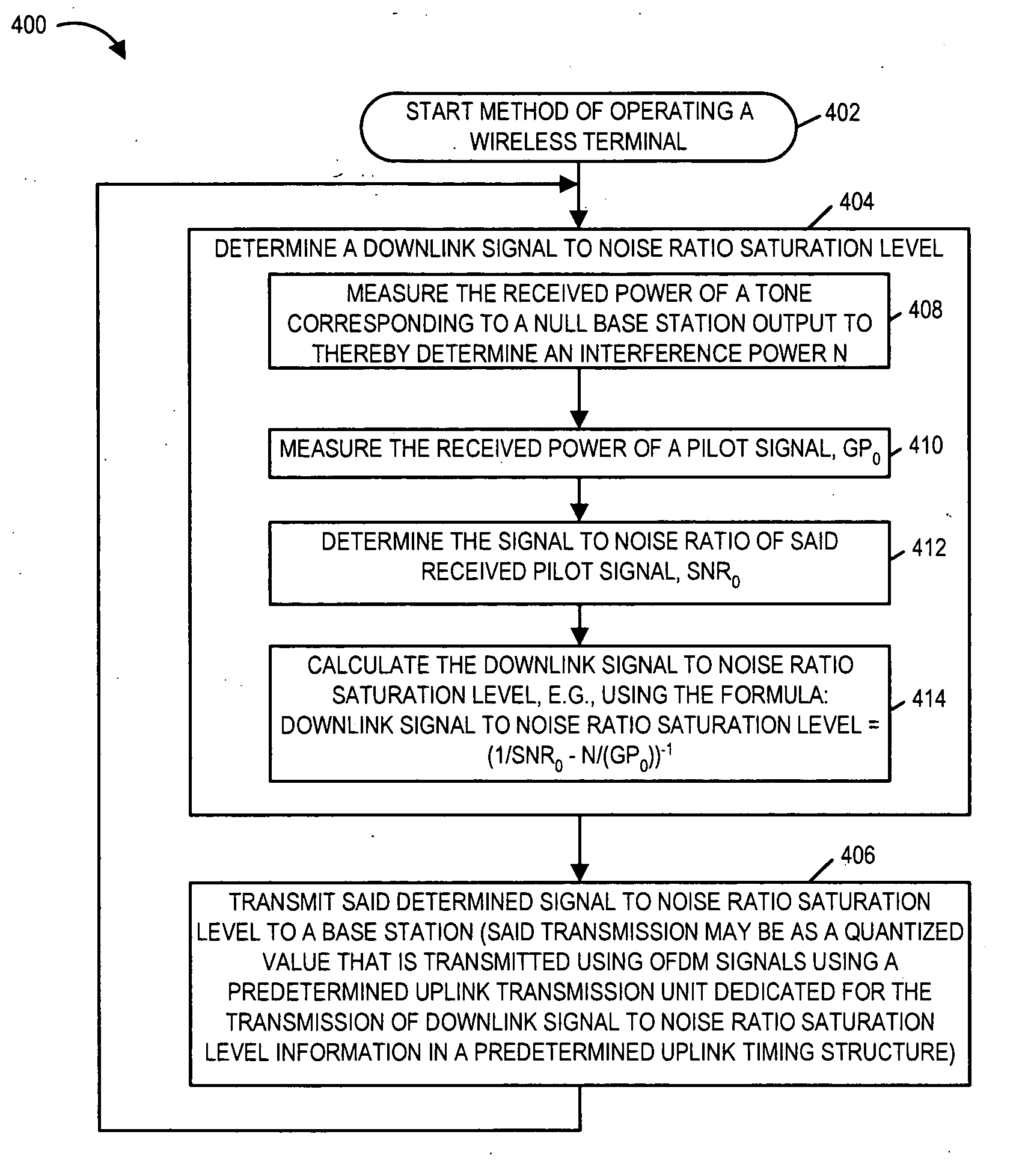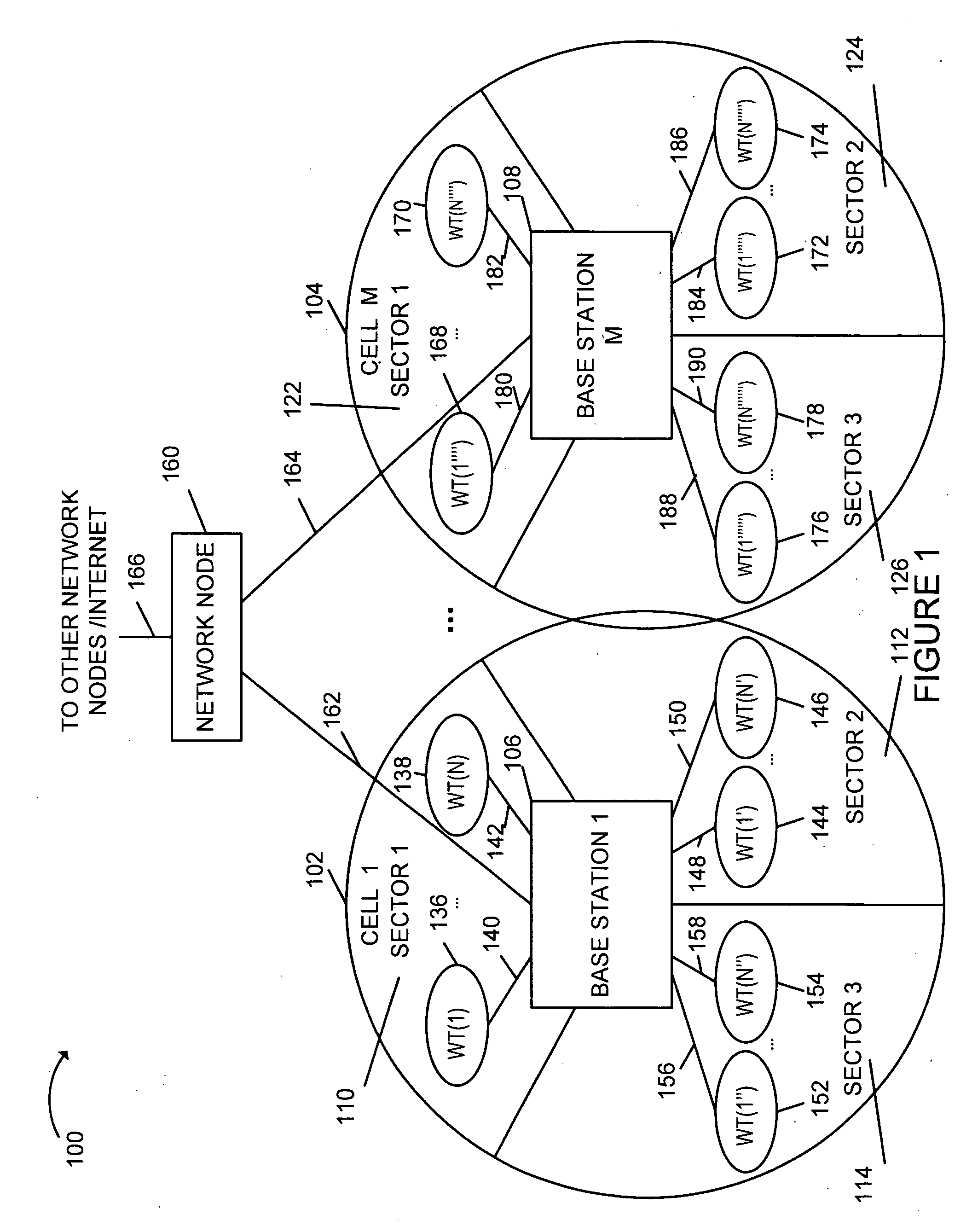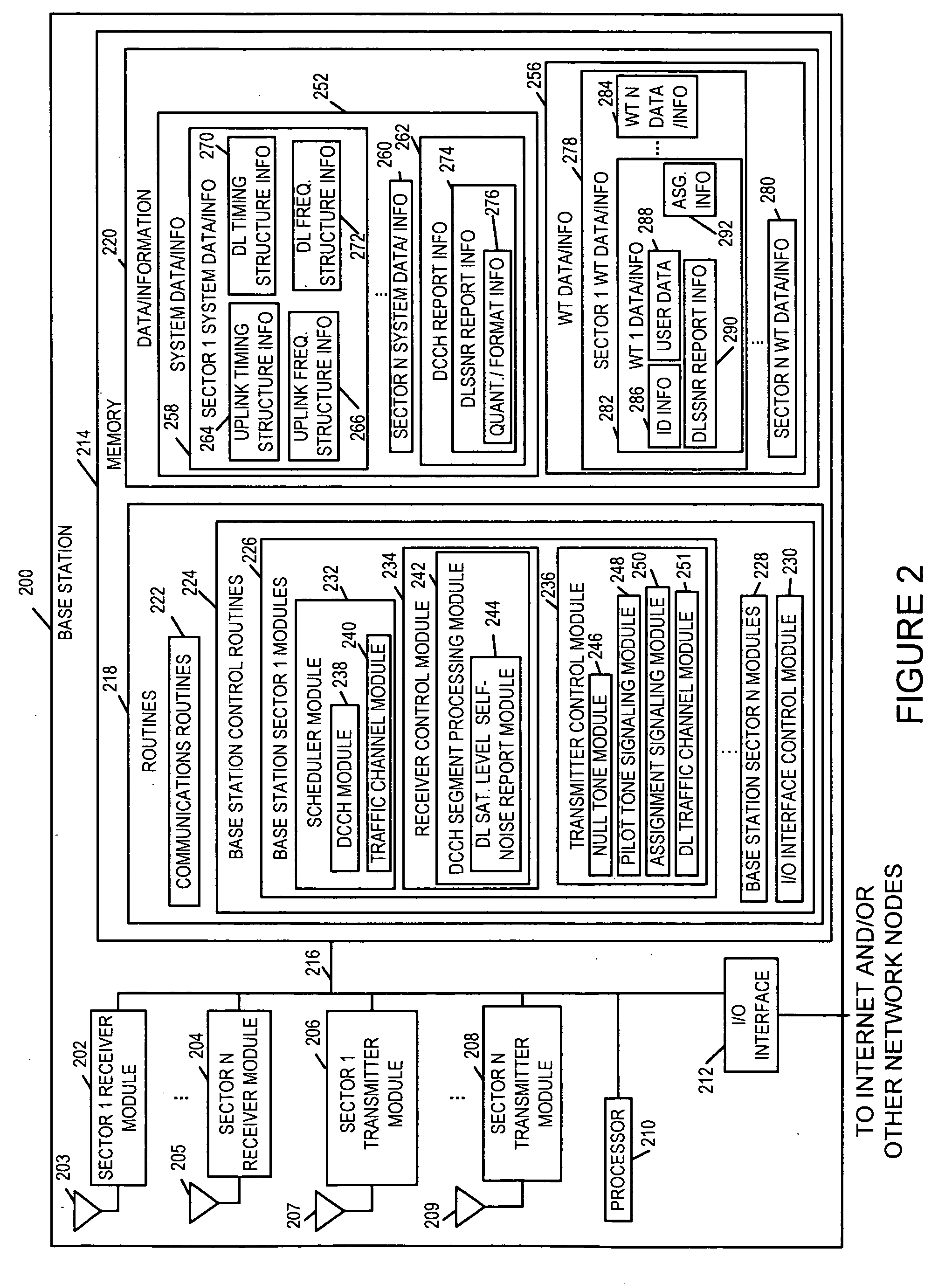Methods and apparatus for generating, communicating, and/or using information relating to self-noise
a self-noise and information technology, applied in the field of wireless signaling, can solve the problems of affecting the the need for appropriate power allocation of the base station, so as to achieve the effect of ensuring the segment is not distorted, and avoiding the decoding of the segmen
- Summary
- Abstract
- Description
- Claims
- Application Information
AI Technical Summary
Benefits of technology
Problems solved by technology
Method used
Image
Examples
Embodiment Construction
[0024]FIG. 1 shows an exemplary communication system 100 implemented in accordance with the present invention including multiple cells: cell 1102, cell M 104. Exemplary system 100 is, e.g., an exemplary OFDM spread spectrum wireless communications system such as a multiple access OFDM system. Each cell 102, 104 of exemplary system 100 includes three sectors. Cells which have not be subdivided into multiple sectors (N=1), cells with two sectors (N=2) and cells with more than 3 sectors (N>3) are also possible in accordance with the invention. Each sector supports one or more carriers and / or downlink tones blocks. In some embodiments at least some of the sectors support three downlink tones blocks. In some embodiments, each downlink tone block is associated with a corresponding uplink tone block. Cell 102 includes a first sector, sector 1110, a second sector, sector 2112, and a third sector, sector 3114. Similarly, cell M 104 includes a first sector, sector 1122, a second sector, secto...
PUM
 Login to View More
Login to View More Abstract
Description
Claims
Application Information
 Login to View More
Login to View More - R&D
- Intellectual Property
- Life Sciences
- Materials
- Tech Scout
- Unparalleled Data Quality
- Higher Quality Content
- 60% Fewer Hallucinations
Browse by: Latest US Patents, China's latest patents, Technical Efficacy Thesaurus, Application Domain, Technology Topic, Popular Technical Reports.
© 2025 PatSnap. All rights reserved.Legal|Privacy policy|Modern Slavery Act Transparency Statement|Sitemap|About US| Contact US: help@patsnap.com



